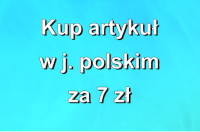Małgorzata Chochowska, Joanna Jutrzenka-Jesion, Dorota Hojan-Jezierska
M. Chochowska, J. Jutrzenka-Jesion, D. Hojan-Jezierska – Effects of selected work-related factors on the prevalence of musculoskeletal disorders. Fizjoterapia Polska 2020; 20(2); 42-51
Streszczenie
Objective. The evaluation of low level laser therapy (LLLT) and ultrasound (US) efficacy in treatment of chronic nonspecyfic low back pain (NLBP) and their impact on the reduction of the level of soft tissue tenderness to palpation and the improvement in spinal mobility.
Material and methods. 120 patients suffering from NLBP were included in the study (groups: I, II, III, 30 people in each one). All patients received 10 treatment sessions, including: 1) personalized kinesiotherapy (10 sessions x 30min); 2) self-therapy (twice a day x 30min); 3) patient education (10 sessions x 30min). Group I was a control group. Group II additionally received 10 applications of LLLT, and group III received 10 applications of US. Patients were examined twice: on the first day of therapy and after three weeks of treatment. Evaluation was done by means of examining lumbar spine mobility in all planes and evaluating soft tissue tenderness to palpation in 24 control points (CP), which were exposed to LLLT (group II)/US (group III) according to the Andrzejewski-Kassolik Scale (AKS).
Results. All groups participating in the study gained a statistically significant improvement (p < 0,05; Wilcoxon Test) with regards to decrease in the level of soft tissue tenderness to palpation according to the AKS, in 23 out of 24 control points (CP). In groups II and III a statistically significant improvement (p < 0,05; Wilcoxon Test) in lumbar spine mobility was gained (except L/R rotation). Moreover, following the end of therapy there was a significantly improvement in spinal mobility (p < 0,05; U-Mann-Whitney test) compared to the control group: in group II in 5 out of 8 tested ranges of movement and in group III in 3 out of 8 tested ranges of motion; and also between groups III and II in 2 out of 8 tested ranges of motion.
Conclusions. 1) The application of personalized kinesiotherapy and education in the area of pain prevention contributes to the improvement in the condition of those with chronic NLBP. 2) The additional application of LLLT and US decreases the level of soft tissue tenderness to palpation, as well as increases spinal mobility in people with chronic NLBP. 3) Slightly better results were obtained following the application of US, however it cannot be explicitly concluded either of these applications is the more effective approach.
Słowa kluczowe: low back pain, myofascial pain syndrome, lasertherapy, ultrasound, range of motion improvement


